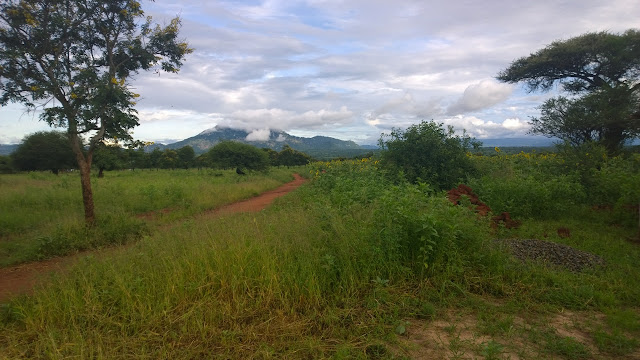From the Heart of Borneo
 |
| Bishop Tsen leading the Chapel Dedication in Kg. Sosogoh - June 2013 |
It was early Sunday morning. The paved road had ceased to exist several kilometers back as the mud-splattered 4x4 we were in came to a halt. Before us was a washed-out, rock-strewn track down the side of a mountain. "This is where it gets interesting," said our driver, Rev William Lo. He was right. After a few more steep kilometers, the road came to an end at a river’s edge and we transferred over to boats to continue our journey deeper into the rain forests of Borneo.
On the weekend of June 22-23, a few YAGM volunteers and I joined Bishop Tsen, Dean Lo, and other leaders of the Basel Christian Church of Malaysia (BCCM) on a trip to dedicate three new church buildings in the Interior Division of Sabah. Located just a stone’s throw away from Malaysia’s border with the Indonesia state of Kalimantan, the villages we were visiting were deep in Murut country. With a name that translates as ‘hill people,’ it should come as little surprise that the Murut have long called the mountainous highlands and river valleys of central Borneo their home. They have traditionally lived in small villages, either in a central long house or individual family homes, along the banks of rivers where they have cultivated padi (rice) and ubi kayu (cassava or, more literally, ‘tree potato’). Largely inaccessible by road due to the terrain, many of these villages continue to rely on longboats going up and down the rivers as their primary form of transportation to other villages and the cities found closer to the coast. As our own boats made their way downstream we saw dozens of others, loaded down with goods to trade and families bound for church.
While there are many who continue to hold onto traditional animist beliefs and practices, Christianity has a strong presence here as well. This was clearly evident in the bright yellow BCCM Chapels that Rev. William would point out to us as we passed by riverside villages. I am told that Christianity is especially attractive to those who convert because it gives them connection to a larger community of faith while allowing them to preserve significant parts of their cultural heritage: their language, music, dress, and their diet. Among the indigenous peoples of Sabah, here and elsewhere, there is a strong appetite for the witness of the Church - for a message of grace and the promise of new life. True to its missionary roots, the BCCM is rising to meet those challenges - especially as members of the more urban Chinese and English speaking congregations dig deep to support their rural brothers and sisters.
When we arrived in Kg. Sigatal for the first dedication service, our entourage was joined by a mission team from two English speaking congregations. They were in the interior to see the fruits of their labor and to enjoy a time of fellowship with the people in each of the three villages. Two of the buildings that were dedicated were built using funds that they raised, while the third was sponsored by a donor from one of the Chinese churches.
Visionary pastors and lay leaders in those congregations, and elsewhere in the BCCM, are encouraging their members to be mission-minded. They are tending to the needs in their immediate communities. They are supporting the growth of Malay-speaking indigenous churches in Borneo and West Malaysia. Furthermore, they are sending missionaries abroad, to places as far flung as Australia and Madagascar, where they work in partnership with local Lutheran church bodies to minister to the Chinese speaking communities there.
As Americans and as guests there was little we could do. These dedications were not ‘our’ doing - not the result of ‘our’ vision, ‘our’ fundraising, or ‘our’ sweat and tears. Standing shoulder-to-shoulder with our companions, we were there to observe the witness of the BCCM. We were there to learn about the ways in which their churches are working across the lines of race/language/geography/class to support one another. We were there to be challenged to go and do likewise. Finally, we were there to celebrate the work of God through these good and faithful servants.
Global Mission in the 21st Century is a multi-faceted, multi-directional phenomenon. The witness of this weekend was but one face of it. -peter
Originally written for my July 2013 Newsletter. Click here to read the rest of this and other updates from Southeast Asia. To see videos from the dedication services, click here to go to the YAGM Malaysia Facebook page.
Originally written for my July 2013 Newsletter. Click here to read the rest of this and other updates from Southeast Asia. To see videos from the dedication services, click here to go to the YAGM Malaysia Facebook page.


Comments